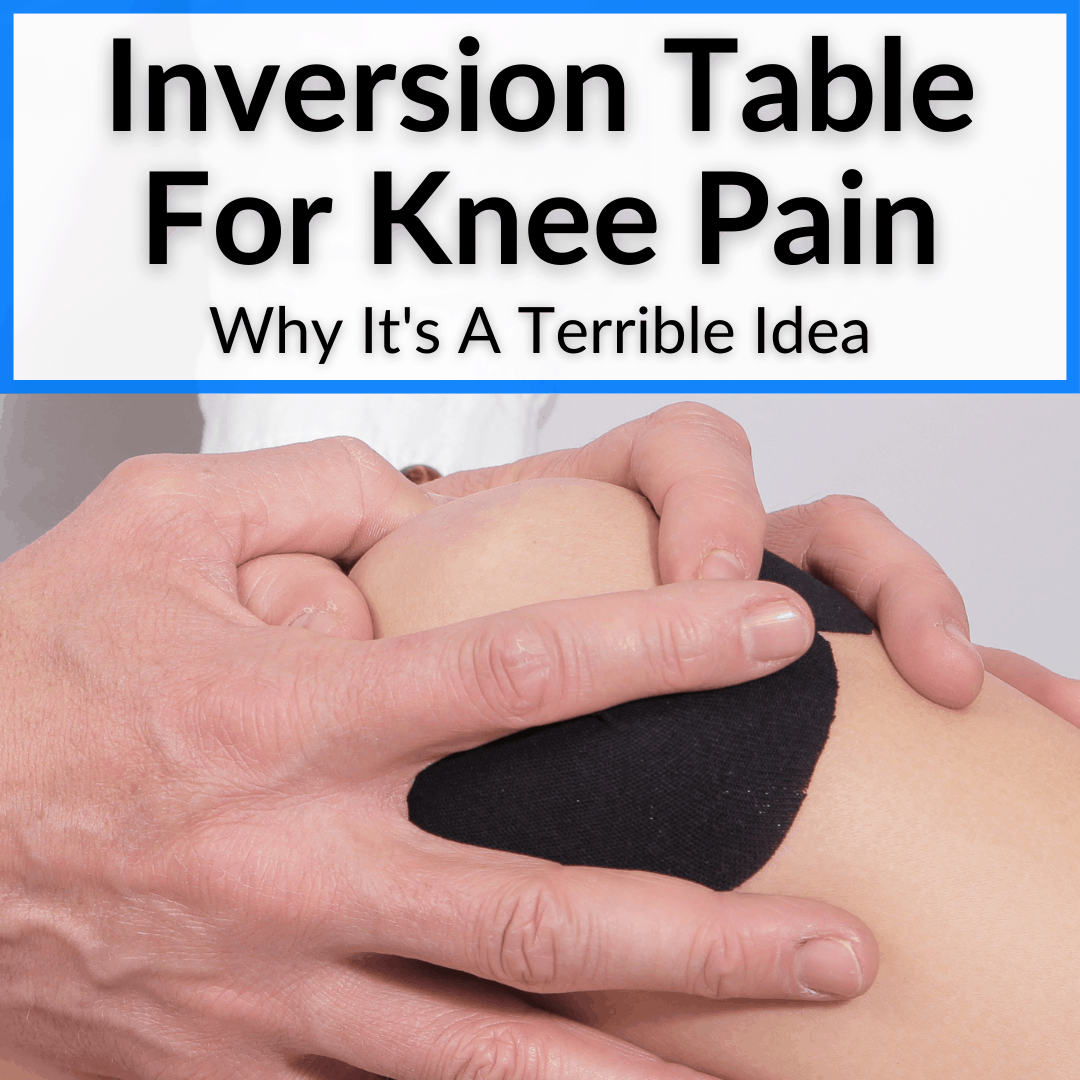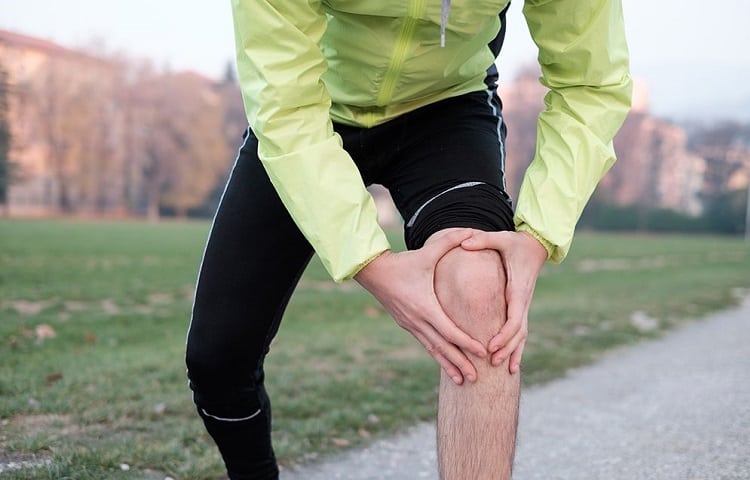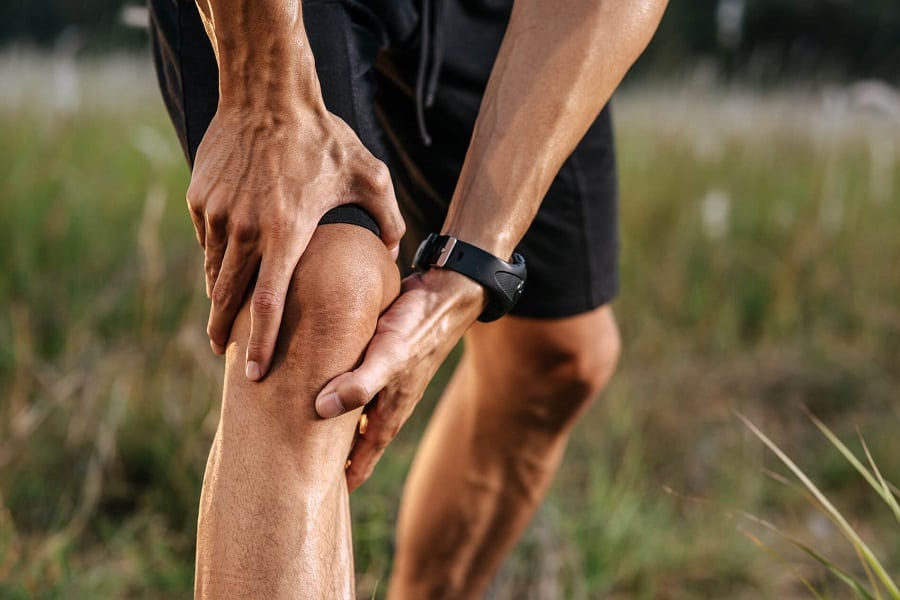 Your knees have been aching for as long as you can remember, and you’re sick of it.
Your knees have been aching for as long as you can remember, and you’re sick of it.
Medication just isn’t doing the trick anymore.
And this chronic pain is interfering with your daily life. It needs to come to an end.
You’ve likely ready that inversion therapy is one of the many ways that people deal with chronic pain.
It only makes sense to wonder if an inversion table can work for knee pain.
The short answer is that it doesn’t. Worse, it can actually do serious damage.
Keep reading to learn everything you need to know about inversion tables for knee pain.
Table of Contents
Inversion Table For Knee Pain: Please Don’t
No. Inversion tables are not designed to help your knees (or your ankles, for that matter).
They are designed to help alleviate pain in your spine and all throughout your back. Inversion tables decompress vertebrae, but they can also help inadvertently massage certain muscles along your back through the stretching process.
But you should never use an inversion table for help with your knees.

In fact, inversion tables can make existing knee pain much worse. Using an inversion table puts strain on your joints, in order to support your spine being stretched.
If you are suffering from knee pain, the best thing you can do is see a doctor. But even better than that is to understand what causes knee pain and how you can prevent it from happening in the first place.
Common Causes Of Knee Pain

Your knees don’t just degrade on their own (well, that depends, actually). There’s an underlying cause as to why your knees develop painful points and begin to ache.
Arthritis
Arthritis is your body attacking itself. While standard arthritis and rheumatoid arthritis have their differences, both attack ligaments surrounding your joints.
Your knees begin to wither away at an alarmingly fast pace, meaning more bone-on-bone friction, as well as an increased risk of other knee injuries due to the weakened area.
Tendonitis
Different from arthritis, tendonitis also attacks the knees with inflammation, but does so during physical activity such as basketball or other high-strain sports. The inflammation is briefly ignored before pain creeps in, and by that point some level of damage has been done.
Your tendons swell from inflammation and cause damage as a result. Tendonitis is commonly caused from physical activities that cause high levels of stress and tension in the knees.
Sprained Knee
Most people don’t know what a sprained knee actually is. They just think that it’s a painful injury, but “at least it wasn’t a broken bone.”
In fact, a sprained knee can put you out of commission for quite some time. A twisted or torn muscle or ligament is the cause, and depending on the severity of the injury (and how seriously you take it during recovery), it could be a lengthy recovery period.
Torn Cartilage
The cartilage in your body is meant to bend and go with the flow, but it is not designed to tear or sever completely.
Torn cartilage can occur from sports injuries, sudden twists, and long periods of harsh impact that isn’t followed up with rest and necessary relaxation to the joints. In some cases, torn cartilage will not repair itself (or repair itself improperly), and surgery will be required.
How To Prevent Knee Pain

If you don’t want to endure the pain and tearing that can occur from knee injuries, you have to be proactive about exercising and how you carry yourself.
Use these tips and preventative measures to prevent knee pain before it becomes an issue.
Start With A Warm-Up
Your knees have cartilage that help you move your joints, and that cartilage needs to be gently stretched and worked before you can expect it to support you in high-octane fun or intense workouts.
Anything that’s highly physically demanding, really. Warm up by walking and stretching those ligaments gently before putting the pedal to the metal.
Skip HIIT Workouts
High intensity interval training is the trend of the last decade, and it has its benefits. But it can also put your body through hell and back.
HIIT exercises are powerful, and as a result they carry a lot of physical stress with them. Side with the idea of “Slow and steady wins the race” and stick to low-intensity workouts (try recumbent bikes and swimming).
Wear The Right Shoes
Your shoes could be causing you to put extra stress on your knees every single time you walk. Without good arch support, you end up compensating by putting pressure on your shins and knees.
Without good ankle support, you tighten your knees for stability without knowing it. This just puts more strain on them with each step.
Stay At A Healthy Weight
Make it a goal to consistently remain in a healthy weight range. You’ve likely found articles that say “every 15 pounds of body weight is equivalent to X”, or something along those lines.
They’re rooted in some science. In fact, Harvard released a health letter in April 2020 that states even losing 5% of your total body weight can provide a ripple of intense health benefits.
Imagine staying within that weight range on a constant basis. Less stress on your body and joints is always a good thing.
Inversion Tables For Knee Pain: Final Thoughts
To put it bluntly, if you already have knee problems, an inversion table could actually make things worse for you. That is true of even the best inversion tables on the market.
Inversion tables are meant to treat your spine and neck, and help decompress bones along your spine that may be suffering from gravity’s constant stress.
Your knees, however, could suffer if you don’t use an inversion table correctly. In short: they don’t do anything positive for your knees, but they could do something negative against them.
Note: This article was not written by a chiropractor or physician. While we research our articles and do our best to provide solutions, do not attempt anything revolving around spinal decompression, inversion, or pain management without seeking out help from your primary healthcare provider first. We are a website, not a medical community.
Hi I have cartilage injury at the back of my knee can I still use my inversion table at a 45 degree angle which may put less pressure on the joints but still help with unloading my joints and organs from gravity also helping to flush out my lymph nodes ?